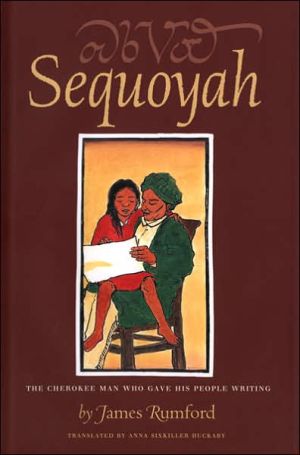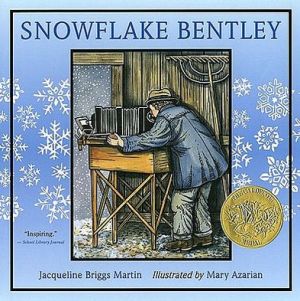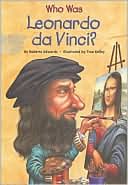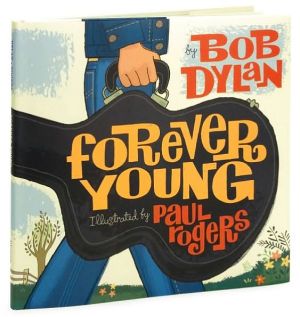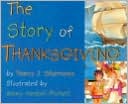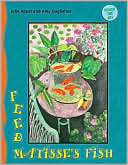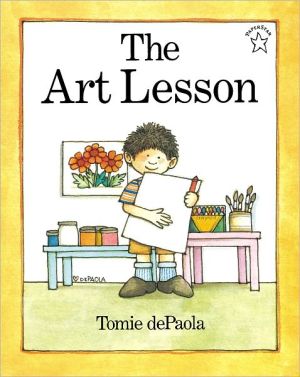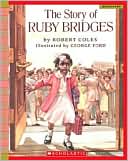Sequoyah: The Cherokee Man Who Gave His People Writing
The story of Sequoyah is the tale of an ordinary man with an extraordinary idea—to create a writing system for the Cherokee Indians and turn his people into a nation of readers and writers. The task he set for himself was daunting. Sequoyah knew no English and had no idea how to capture speech on paper. But slowly and painstakingly, ignoring the hoots and jibes of his neighbors and friends, he worked out a system that surprised the Cherokee Nation—and the world of the 1820s—with its beauty...
Search in google:
The story of Sequoyah is the tale of an ordinary man with an extraordinary idea—to create a writing system for the Cherokee Indians and turn his people into a nation of readers and writers. The task he set for himself was daunting. Sequoyah knew no English and had no idea how to capture speech on paper. But slowly and painstakingly, ignoring the hoots and jibes of his neighbors and friends, he worked out a system that surprised the Cherokee Nation—and the world of the 1820s—with its beauty and simplicity. James Rumford’s Sequoyah is a poem to celebrate literacy, a song of a people’s struggle to stand tall and proud.Publishers WeeklyRumford's (Nine Animals and the Well) economical yet lyrically told picture-book biography begins as the unseen narrator's father explains how California's Giant Sequoia, or redwoods, earned their name. "This Sequoyah must have been famous,/ .../ He must have been as tall and as strong as these trees." The narrative then recounts the story of a man, crippled, who was born in Tennessee in the 1760s to "a Cherokee woman and a white man he never knew." Sequoyah "was not a chief, but he loved his people like one./ He wanted them to stand as tall as any people on earth." Sequoyah knew no English and could not read, but invented a writing system for the Cherokee, believing that "Writing will make us strong." The determined man scratched onto slats of wood hundreds of symbols-one for each word. When detractors, fearing these signs were evil, burned down his cabin and his work, Sequoyah began again using a different tactic; he invented a syllabary of 84 signs, "to spell out the sounds of the language." Sixkiller Huckaby's Cherokee translation, presented alongside the English text, makes the story all the more real and relevant. Reminiscent of woodblock prints, Rumford's spare mixed-media compositions in shades of deep green and red clay, create a pleasingly subtle, rough-hewn texture. The art's vertical format effectively imitates the stature of both the mighty redwoods and their namesake who, despite his physical ailments, stands tall and strong. Ages 5-9. (Nov.) Copyright 2004 Reed Business Information.
\ From the Publisher"The author writes with a concise eloquence that echoes the oral tradition and makes this one of those rare gems of read-aloud nonfiction." School Library Journal, Starred\ Textured full-page mixed-media illustrations...feature strong figures and spare scenes reminiscent of the Asian and Native American artwork Rumford cites as sources of inspiration. Horn Book, Starred\ Simple, declarative sentences take on the cadences of legend...the bright, textured illustrations take on the look of heavily outlined block prints, giving the whole the feeling of an old-fashioned children's history.\ Kirkus Reviews, Starred\ \ \ \ \ \ Publishers WeeklyRumford's (Nine Animals and the Well) economical yet lyrically told picture-book biography begins as the unseen narrator's father explains how California's Giant Sequoia, or redwoods, earned their name. "This Sequoyah must have been famous,/ .../ He must have been as tall and as strong as these trees." The narrative then recounts the story of a man, crippled, who was born in Tennessee in the 1760s to "a Cherokee woman and a white man he never knew." Sequoyah "was not a chief, but he loved his people like one./ He wanted them to stand as tall as any people on earth." Sequoyah knew no English and could not read, but invented a writing system for the Cherokee, believing that "Writing will make us strong." The determined man scratched onto slats of wood hundreds of symbols-one for each word. When detractors, fearing these signs were evil, burned down his cabin and his work, Sequoyah began again using a different tactic; he invented a syllabary of 84 signs, "to spell out the sounds of the language." Sixkiller Huckaby's Cherokee translation, presented alongside the English text, makes the story all the more real and relevant. Reminiscent of woodblock prints, Rumford's spare mixed-media compositions in shades of deep green and red clay, create a pleasingly subtle, rough-hewn texture. The art's vertical format effectively imitates the stature of both the mighty redwoods and their namesake who, despite his physical ailments, stands tall and strong. Ages 5-9. (Nov.) Copyright 2004 Reed Business Information.\ \ \ Children's LiteratureRumford is a writer-illustrator who has brought to life leaders from all eras and arenas. Each book finds some special way to honor the person whose life journey changed the world in some way. He begins his book with a personal story, telling how his father stopped by giant redwoods and told him of the man for whom the Giant Sequoias were named. The book's format is tall as if to represent the upward growth of far reaching trees. This is a perfect representation for Sequoyah, the 19th century Cherokee man who reached beyond all expectations to help his people "stand as tall as any people on earth," capturing "their voices in writing" so they wouldn't "disappear in the white man's world." The verse-like text serves as another testament to a man who worshipped words. Further tribute comes from Ann Sixkiller Huckaby's Cherokee translation, memorializing a man who, at age 50, invented symbols for each of 84 Cherokee syllables despite his own people's doubts, jeers, and cruelty. When his people began to perish under the severe 1830's resettlement and resulting sickness, his efforts guaranteed that the Cherokee's words and stories would survive forever. 2004, Houghton Mifflin, Ages 7 to 11. \ —Susie Wilde\ \ \ \ \ School Library JournalGr 1-4-Fascinated by the Giant Sequoias they see during a California vacation, unnamed children listen to their father tell of the trees' namesake from the opposite side of North America. Thus, in short paragraphs accompanied by richly textured illustrations, Rumford presents the seminal events in Sequoyah's life, culminating in his invention of the Cherokee syllabary. The author writes with a concise eloquence that echoes the oral tradition and makes this one of those rare gems of read-aloud nonfiction. As in his other picture books, the artwork is executed in a style and medium that evoke the period and culture of the subject, in this case creating bold-lined scenes reminiscent of 19th-century woodblock prints. Done in ink, watercolor, pastel, and pencil, the illustrations were adhered to a rough piece of wood, and its textures were highlighted through the use of chalk and colored pencil. The perfect finishing element is the parallel text in Cherokee, which not only demonstrates the product of Sequoyah's genius but also makes this beautiful book readily accessible to Cherokee children in their own language. The end matter includes additional facts and the complete syllabary. Sequoyah is a perfect companion to Rumford's other picture books on important world scholars from history and legend-Jean-Fran ois Champollion, Ibn Battuta, Cadmus-whose (mostly linguistic) achievements are comparatively unsung. A must-have for all collections.-Sean George, Memphis-Shelby County Public Library & Information Center, Memphis, TN Copyright 2004 Reed Business Information.\ \ \ \ \ Kirkus ReviewsThis simply told tale imagines a parent addressing a child among the Giant Sequoias of California, moving in stately fashion from the trees to the Cherokee genius who invented a written language for his people. Simple, declarative sentences take on the cadences of legend as they outline the efforts of the man who, single-handedly and in the face of jeers and sometimes violent opposition, created a Cherokee syllabary. Rumford takes pains to emphasize that written Cherokee is not dead, despite references to the hardships of the Cherokee; as testament, the English text is accompanied by a Cherokee translation, done in the same typeface Sequoyah helped to develop. The bright, textured illustrations take on the look of heavily outlined block prints, giving the whole the feeling of an old-fashioned children's history. The tall, slender proportions of the trim echo the sequoias that frame the story-a pleasingly appropriate design detail. An author's note details the difficulties of parsing fact from the legends that have grown up around Sequoyah, and includes suggestions for further reading. The Sequoyah syllabary and a timeline round out the package. (Picture book/nonfiction. 5-8)\ \
